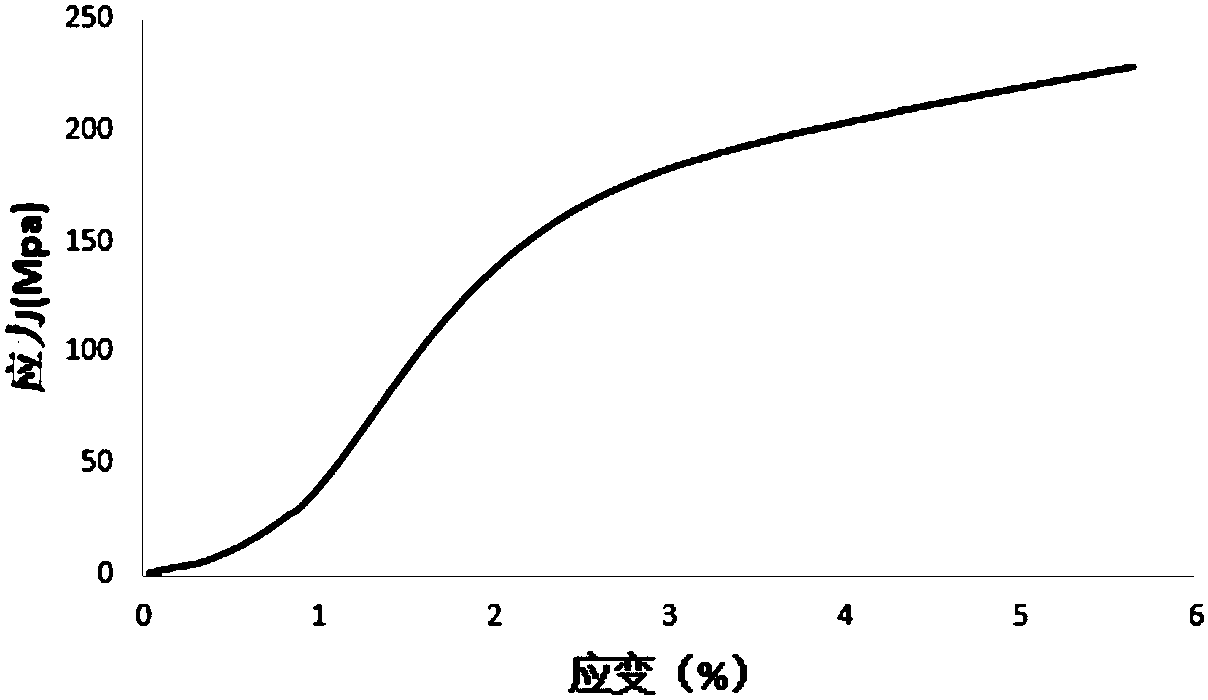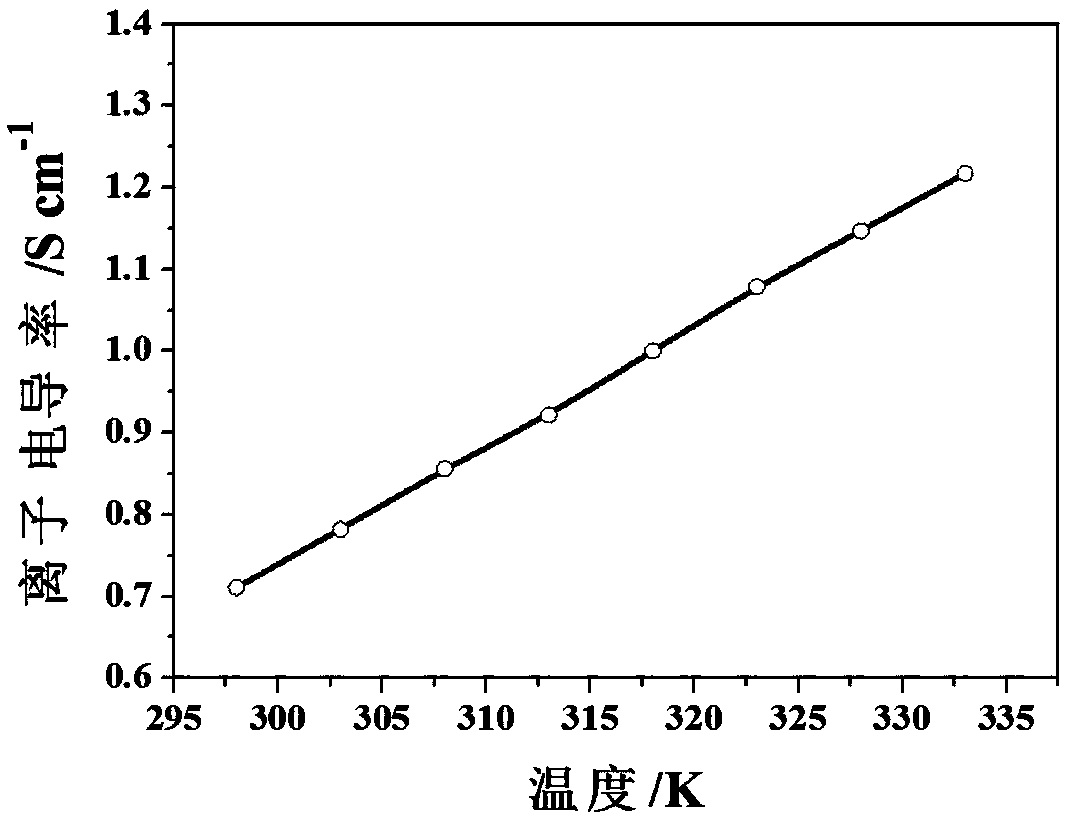Cellulose nanofibril/metal-organic framework composite lithium ion battery separator and preparation method
A metal-organic framework and nanofibril technology, which is applied in nanotechnology, nanotechnology, secondary batteries, etc., can solve the problems of reduced battery operation performance and service life, uneven size of inorganic fillers, and insufficient adhesion. The preparation method is simple and fast, the price is low, and the wettability is good.
- Summary
- Abstract
- Description
- Claims
- Application Information
AI Technical Summary
Problems solved by technology
Method used
Image
Examples
Embodiment 1
[0037] 1) Add 5 g of wood pulp into 90 mL of formic acid with a mass fraction of 80% to disperse, carry out a hydrolysis reaction at 80° C. and 300 rpm under stirring conditions for 8 hours, collect solids in the hydrolyzate through solid-liquid separation, and wash the solids with water until Neutral, after washing, add the aprotic polar organic solvent DMAC for solvent replacement to obtain a cellulose suspension with a mass fraction of 0.3%, for use;
[0038] 2) Homogenize the cellulose suspension obtained above by high pressure, and homogenize the cellulose 10 times under a pressure of 100 MPa to realize the nanonization of cellulose and the partial dissolution of the surface molecules of nanocellulose to obtain viscous cellulose nanofibril suspension;
[0039] 3) Dissolve 0.291g of cobalt nitrate hexahydrate and 0.328g of dimethylimidazole in 10ml of DMAC respectively, and then mix to obtain a metal organic framework precursor solution, and then mix 20ml of the metal orga...
Embodiment 2
[0044] 1) Add 8 g of bleached wheat straw pulp to 100 mL of formic acid with a mass fraction of 83% to disperse, carry out hydrolysis reaction at 85 ° C and 200 rpm under stirring conditions for 6 h, collect solids in the hydrolyzate by solid-liquid separation, and wash the solids with water to neutrality, after washing, add the aprotic polar organic solvent DMSO to carry out solvent replacement, and obtain a cellulose suspension with a mass fraction of 0.35%, which is ready for use;
[0045] 2) Ultrasonic crushing of the obtained cellulose suspension under the condition of 1000W ultrasonic crushing for 75 minutes to achieve nano-nization of cellulose and partial dissolution of nano-cellulose surface molecules to obtain a viscous cellulose nanofibril suspension;
[0046] 3) Dissolve 1.188g of zinc nitrate hexahydrate and 1.312g of dimethylimidazole in 25ml of DMSO respectively, and then mix to obtain a metal organic framework precursor solution, and then mix 50ml of the metal o...
Embodiment 3
[0050] 1) Add 10 g of powdered microcrystalline cellulose to 80 mL of formic acid with a mass fraction of 62% to disperse, perform a hydrolysis reaction at 73° C. and 150 rpm under stirring conditions for 11 hours, and collect solids in the hydrolyzed product through solid-liquid separation. Washing with water to neutrality, after washing, add the aprotic polar organic solvent DMF for solvent replacement, to obtain a cellulose suspension with a mass fraction of 0.45%, and set aside;
[0051] 2) Homogenize the cellulose suspension obtained above by high pressure, and homogenize the cellulose 14 times under a pressure of 90 MPa to realize the nanonization of cellulose and the partial dissolution of the surface molecules of nanocellulose to obtain viscous cellulose nanofibril suspension;
[0052] 3) Dissolve 0.408g of zinc chloride and 0.984g of dimethylimidazole in 40ml of DMF respectively, and then mix to obtain a metal-organic framework precursor solution, and then mix 80ml of...
PUM
| Property | Measurement | Unit |
|---|---|---|
| diameter | aaaaa | aaaaa |
| thickness | aaaaa | aaaaa |
| tensile strength | aaaaa | aaaaa |
Abstract
Description
Claims
Application Information
 Login to View More
Login to View More - R&D
- Intellectual Property
- Life Sciences
- Materials
- Tech Scout
- Unparalleled Data Quality
- Higher Quality Content
- 60% Fewer Hallucinations
Browse by: Latest US Patents, China's latest patents, Technical Efficacy Thesaurus, Application Domain, Technology Topic, Popular Technical Reports.
© 2025 PatSnap. All rights reserved.Legal|Privacy policy|Modern Slavery Act Transparency Statement|Sitemap|About US| Contact US: help@patsnap.com



